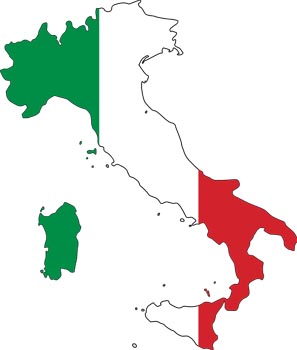Up to half a million teachers, students and parents are expected to march today in Italy protest against PM Matteo Renzi’s education ‘reforms’.
The spin is that the changes will offer a ‘good school’ to all in a country that suffers from a dire underinvestment in education – Italy spends less as a proportion of national output than all its main peers in the euro zone.
But in practice, at best, the ‘reforms’ will deliver too little too late for the country’s creaking schools, and at worst it is a cover for privatising education and fair pay delivered through collective bargaining. Here’s a few key points of the education law challenged by the marchers today.
1. Renzi has promised to put 100,000 teachers currently on precarious contracts on permanent contracts. Sounds good. But the law speeding through parliament will likely only affect 40,000, and only as and when decided by headteachers. And it fails to grapple with the scale of exploitation within the workforce – in total the state school system relies on a precariat of 600,000 staff, according to some estimates.
2. Power is being concentrated into the hands of headteachers, away from school councils, involving students and parents. Headteachers will have powers over what is taught and training. They will also have a say over pay and hiring. This is part of a process of creeping privatisation, is undemocratic and could increase clientelism, which already strangles development in some areas. Even headteachers, also marching today, oppose their new powers
3. Performance related pay will be introduced – headteachers will be able to tap into a ‘bonus’ fund of 200 million euros to reward teachers for performance and training undertaken. Again headteachers are opposed. They believe all elements of the pay packet should remain part of the national contract, fearing the system would be opaque, poorly managed and open to abuse.
4. Students of technical subjects will be forced to do unpaid apprenticeships; this is supposed to respond to criticisms that Italian students are not sufficiently prepared for the world of work, but teaching unions and students say it is simply a cover for making kids work for free.
5. Private schools will get a boost from up to 4,000 euros annual tax rebate on school-related costs to families choosing to opt out of the state system – a waste of taxpayers’ money that diverts badly needed funds from the state school system and which will disproportionately benefit the privileged in Italian society, according to unions
6. The state of school buildings is a national scandal and Renzi has promised an impressive sounding budget of 4 billion euros – but the reality is that he’s added just 40 million extra to the resources while a much needed register documenting the state of school buildings has failed to materialise
Many marching today want a complete withdrawal of the education law. Unions, more pragmatic, are demanding substantial amendments, and have some support from the more progressive elements within the ruling Democratic Party.
What’s for sure, as one of the richest nations on earth, Italy can afford to invest in education, including its teaching staff. For example, a modest wealth tax and the reintroduction of inheritance tax, promoted by the largest union, the CGIL, would deliver 14 billion euros into the state coffers alone, more than enough to fund a ‘good school’ for all Italian kids.
See the photos
Sources: CGIL; Il Fatto Quotidiano; Panorama; Ansa





Discussion
No comments yet.